
On Friday, due to ongoing high levels of deadly air pollution in the area, the Indian supreme court declared a public health emergency in New Delhi, closing schools and banning construction activity in the capital city for at least the next five days. This is only the latest in a series of air pollution-related crises for India’s second most populous city, which ranks as one of the most polluted major cities on earth. Living in one of the world’s biggest cities confers all kinds of benefits, including access to public transportation, entertainment, jobs, restaurants and more. But for many millions of people around the world, living in a city also means being exposed to deadly air pollution on a regular basis.
One specific type of air pollution, commonly known as PM2.5 — shorthand for particulate matter that is 2.5 micrometers in diameter or smaller — is especially harmful. For perspective, the diameter of a human hair is 50-70 micrometers, so particles that are 2.5 micrometers or smaller are very fine and inhalable. The source of PM2.5 is typically combustion — fires, automobiles, or factories — and this type of air pollution has been linked to a number of health issues, including asthma, lung infections, heart attacks, and premature death.
To identify the world’s most polluted cities, 24/7 Tempo reviewed the average annual concentration of PM2.5 particles in nearly 1,300 cities around the globe from the World Health Organization’s 2018 update to its Global Ambient Air Quality Database. The 28 cities on this list all have a PM2.5 concentration of at least 85 micrograms per cubic meter or more. To compare, the most polluted U.S. city, Bakersfield, California, reported an annual average PM2.5 concentration of 18 micrograms.
We also included PM10 pollution, or concentration levels of larger inhalable particles that are 10 micrometer in diameter or smaller. While the finer PM2.5 particles can get deep into the lungs and even the bloodstream, the coarser PM10 particles are less harmful, although they can irritate a person’s eyes, nose, and throat.
The vast majority of the cities on this list can be found in either China or India. The high number of cities from the two countries might seem to suggest these nations have especially poor regulations or industries that tend to pollute. Neither nation ranks among the countries doing the least to protect the environment, but among the world’s largest industrial powers, they rank behind the U.S. in air quality regulations. These are the countries doing the least to protect the environment.
While this may be the case, the two nations also simply have a large number of highly populated cities. Of the 150 most populous cities with available data from the U.N., more than one in three are in either China or India. Only five of the cities on this list have populations below 0.5 million. Several of the cities on this list are among the most highly populated cities in the world, or are located near them. These are the the world’s 33 megacities.
Click here to Read About the 28 Most Polluted Cities in the World.
Click here to see our methodology.

28. Jiaozuo, Central China
> Population: 732,000
> Average annual PM2.5 pollution per cubic meter: 85.0 micrograms
> Average annual PM10 pollution per cubic meter: 142.0 micrograms
[in-text-ad]

27. Al-Shuwaikh, Kuwait
> Population: 2,500
> Average annual PM2.5 pollution per cubic meter: 85.3 micrograms
> Average annual PM10 pollution per cubic meter: 180.1 micrograms
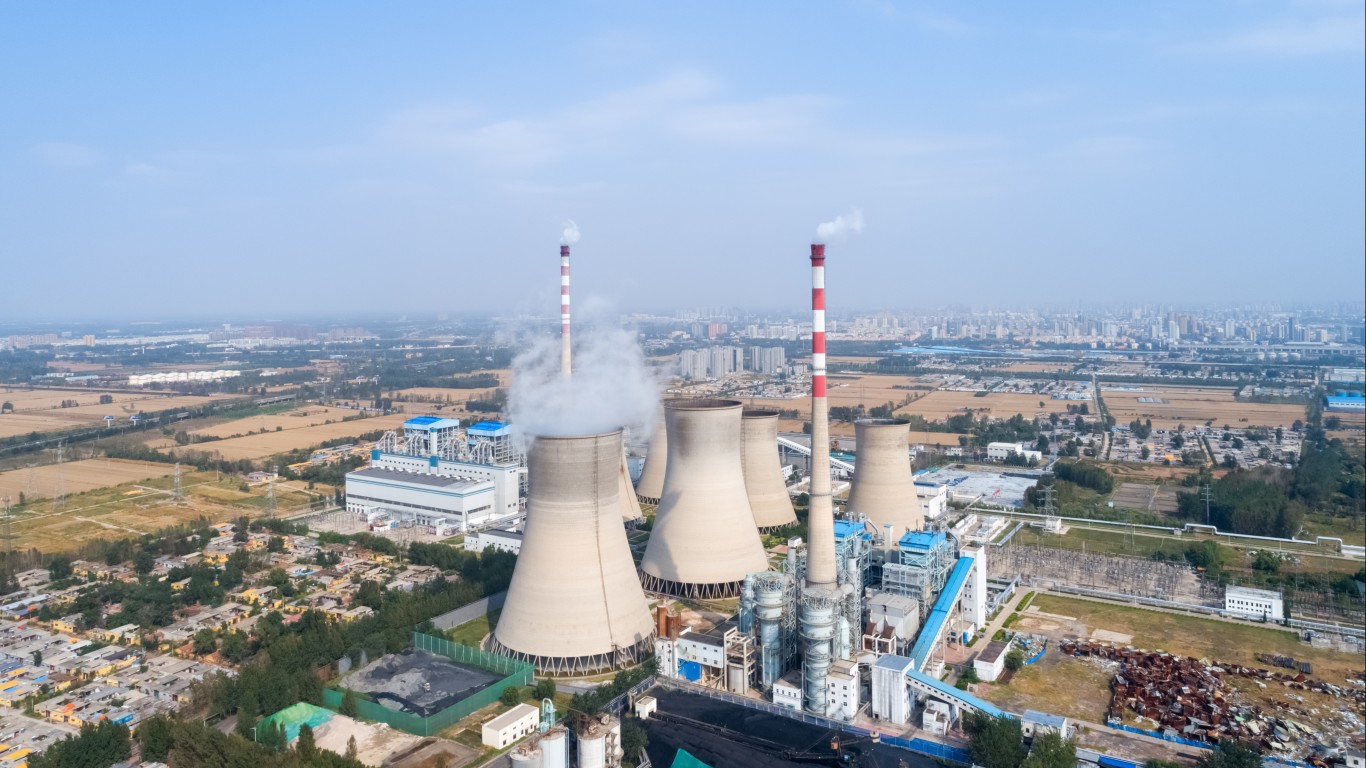
25. Liaocheng, East China
> Population: 677,000
> Average annual PM2.5 pollution per cubic meter: 86.0 micrograms
> Average annual PM10 pollution per cubic meter: 151.0 micrograms
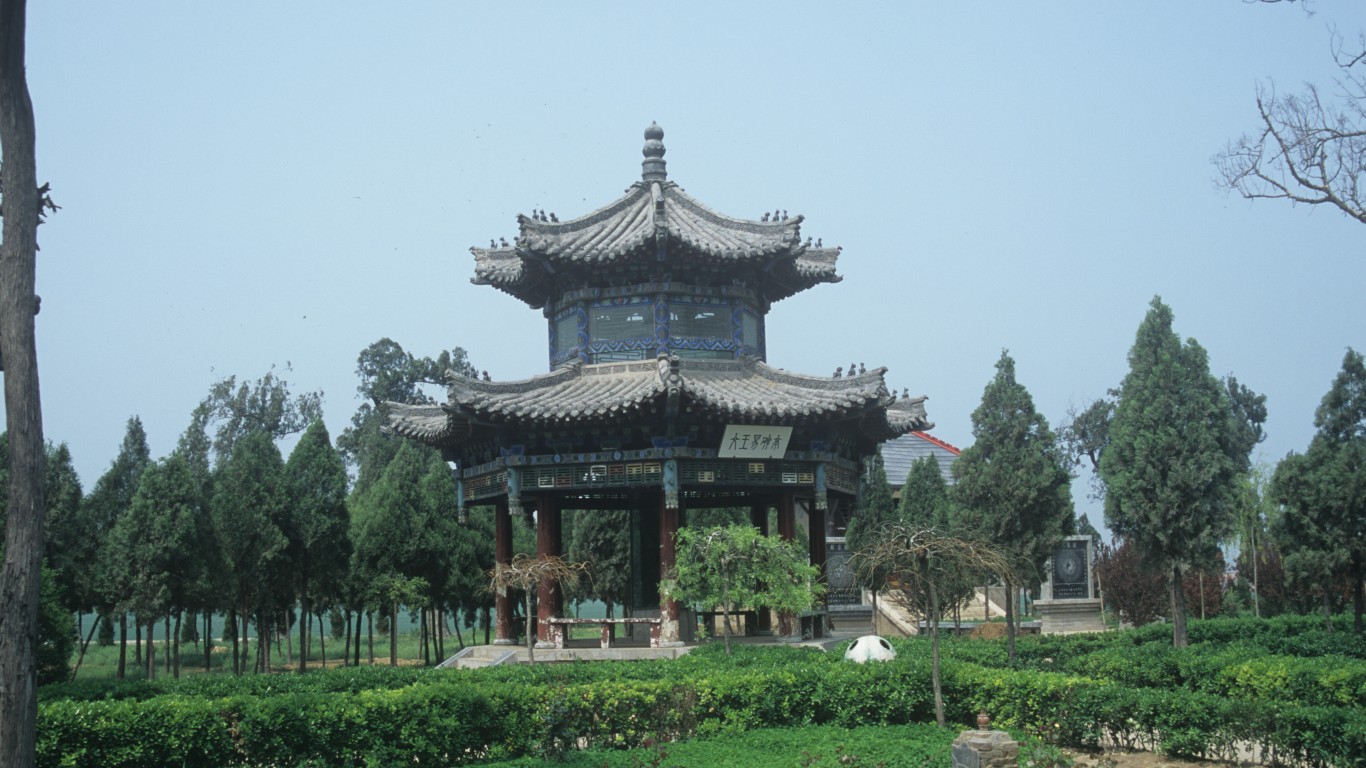
25. Anyang, Central China
> Population: 1.1 million
> Average annual PM2.5 pollution per cubic meter: 86.0 micrograms
> Average annual PM10 pollution per cubic meter: 155.0 micrograms
[in-text-ad-2]
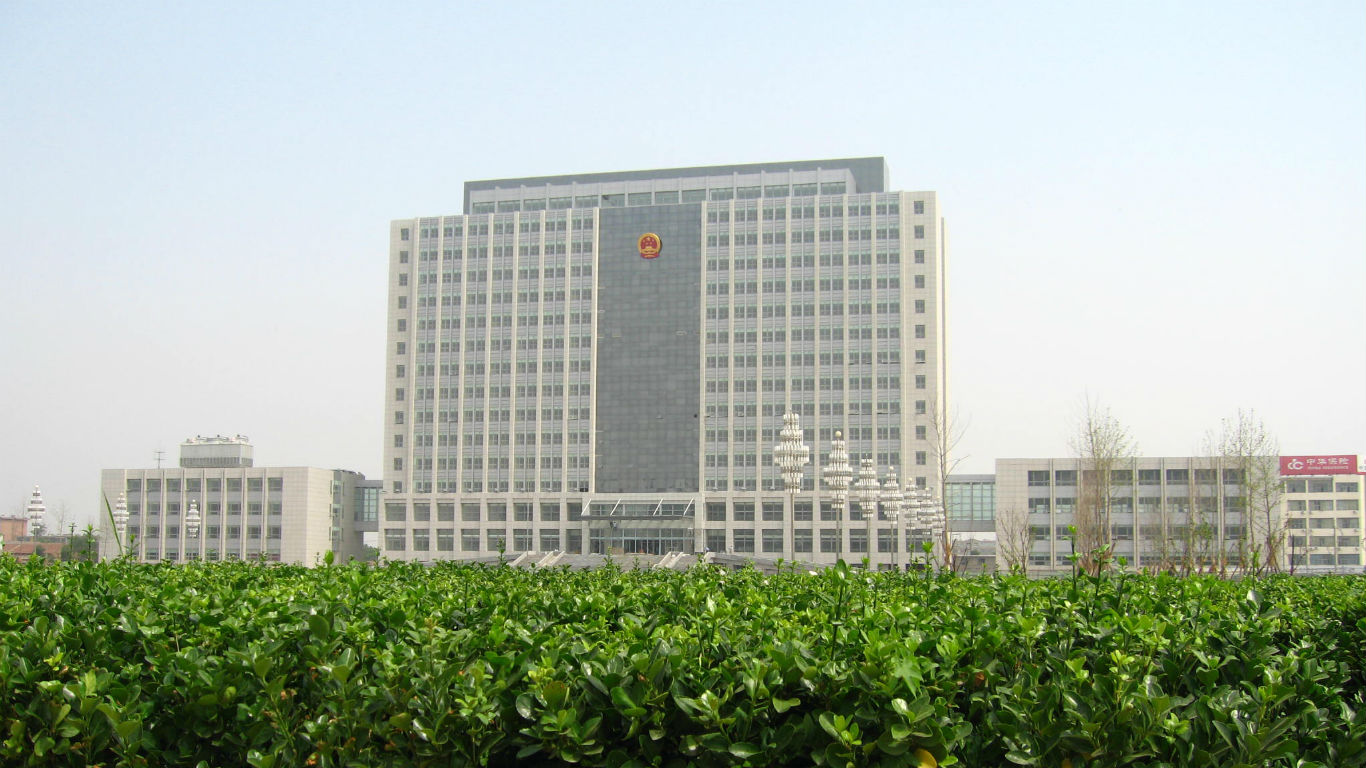
23. Hengshui, North China
> Population: 478,000
> Average annual PM2.5 pollution per cubic meter: 87.0 micrograms
> Average annual PM10 pollution per cubic meter: 143.0 micrograms
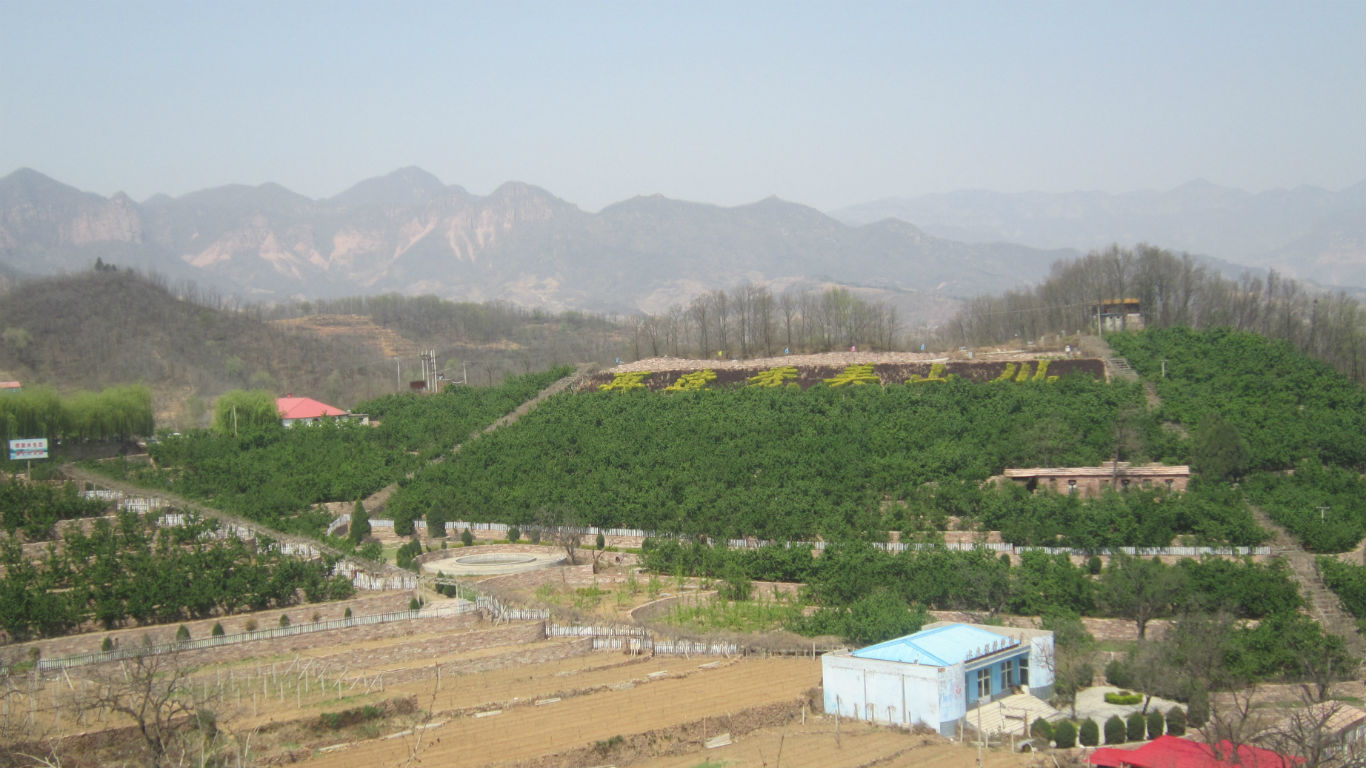
23. Xingtai, North China
> Population: 742,000
> Average annual PM2.5 pollution per cubic meter: 87.0 micrograms
> Average annual PM10 pollution per cubic meter: 185.9 micrograms
[in-text-ad]
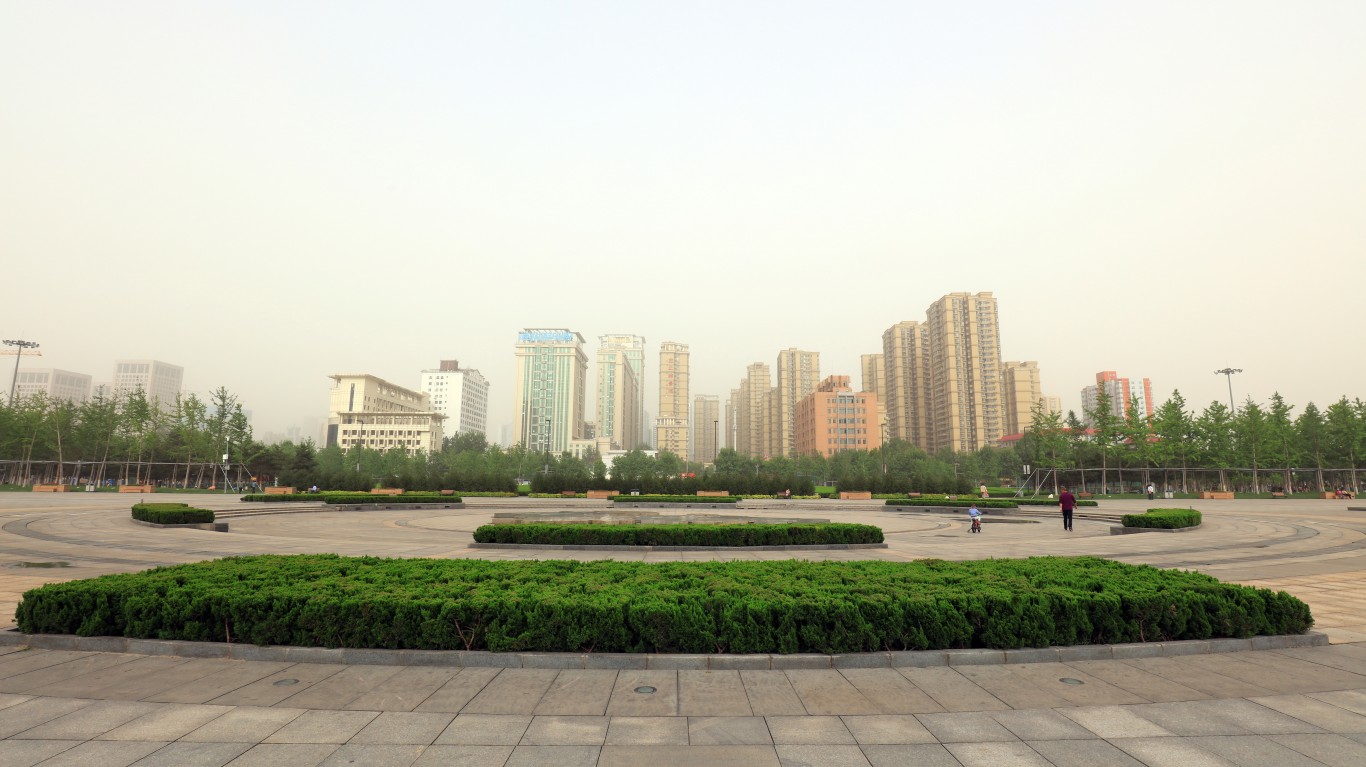
22. Shijiazhuang, North China
> Population: 3.3 million
> Average annual PM2.5 pollution per cubic meter: 89.0 micrograms
> Average annual PM10 pollution per cubic meter: 147.0 micrograms

21. Ji’nan, East China
> Population: 4.0 million
> Average annual PM2.5 pollution per cubic meter: 90.0 micrograms
> Average annual PM10 pollution per cubic meter: 192.3 micrograms

20. Ulaanbaatar, Mongolia
> Population: 1.4 million
> Average annual PM2.5 pollution per cubic meter: 92.2 micrograms
> Average annual PM10 pollution per cubic meter: 196.9 micrograms
[in-text-ad-2]
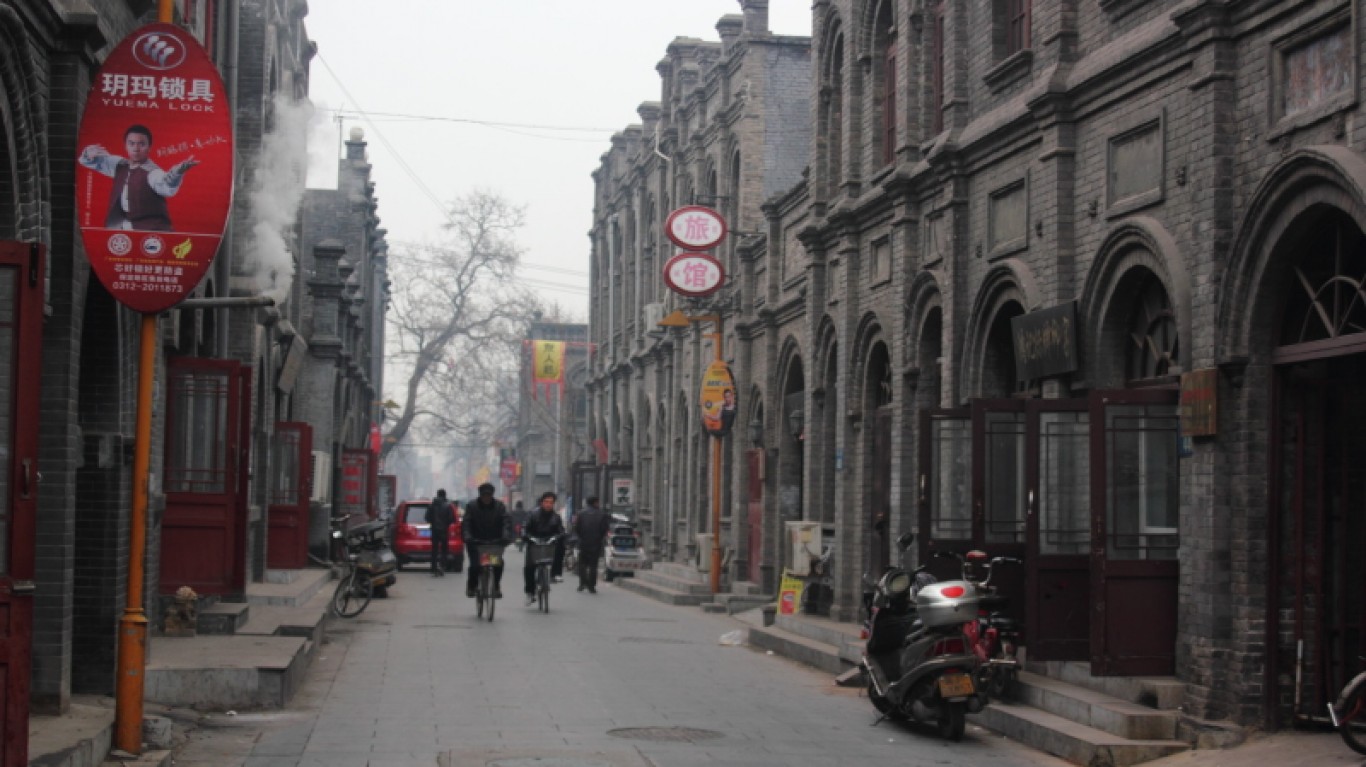
19. Baoding, North China
> Population: 1.1 million
> Average annual PM2.5 pollution per cubic meter: 93.0 micrograms
> Average annual PM10 pollution per cubic meter: 147.0 micrograms

18. Ali Subah Al-Salem, Kuwait
> Population: 42,000
> Average annual PM2.5 pollution per cubic meter: 93.8 micrograms
> Average annual PM10 pollution per cubic meter: 198.1 micrograms
[in-text-ad]
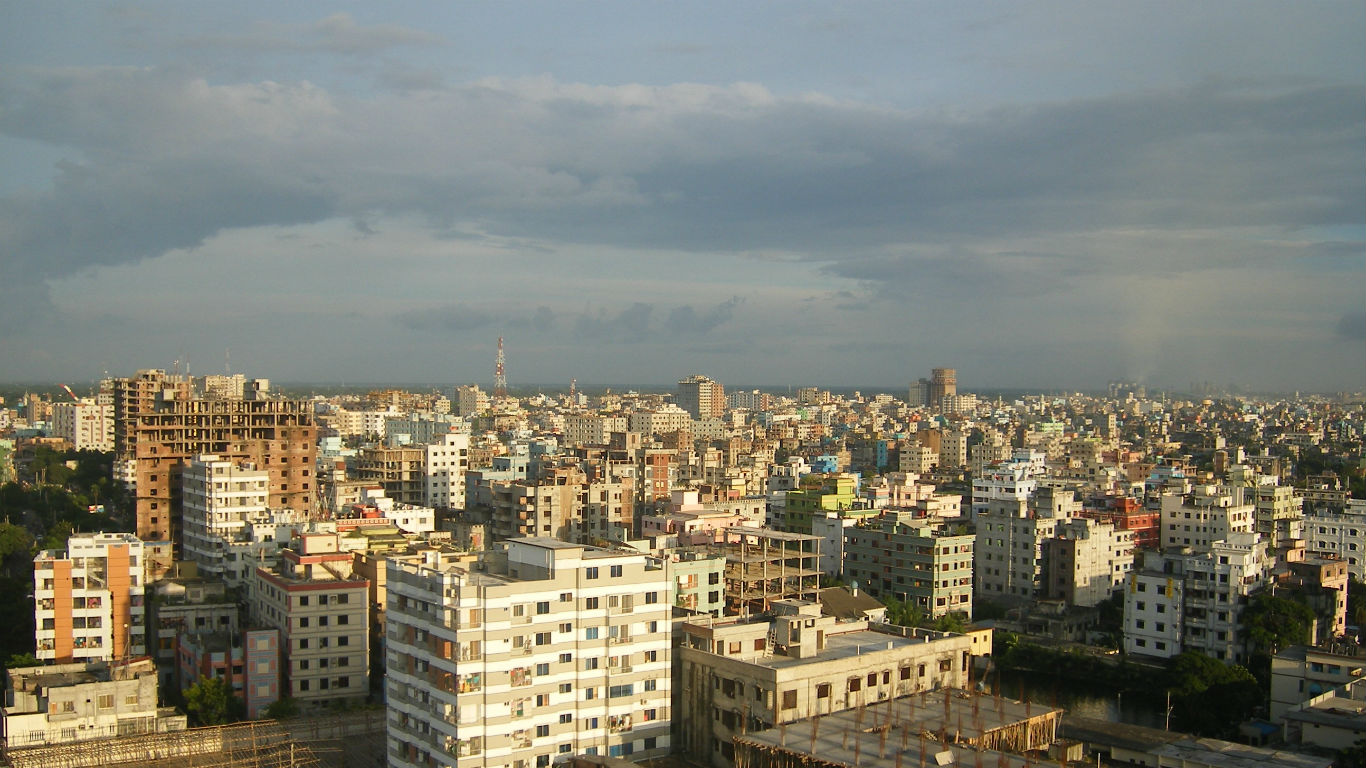
17. Narayangonj, Bangladesh
> Population: 543,000
> Average annual PM2.5 pollution per cubic meter: 94.2 micrograms
> Average annual PM10 pollution per cubic meter: 205.0 micrograms
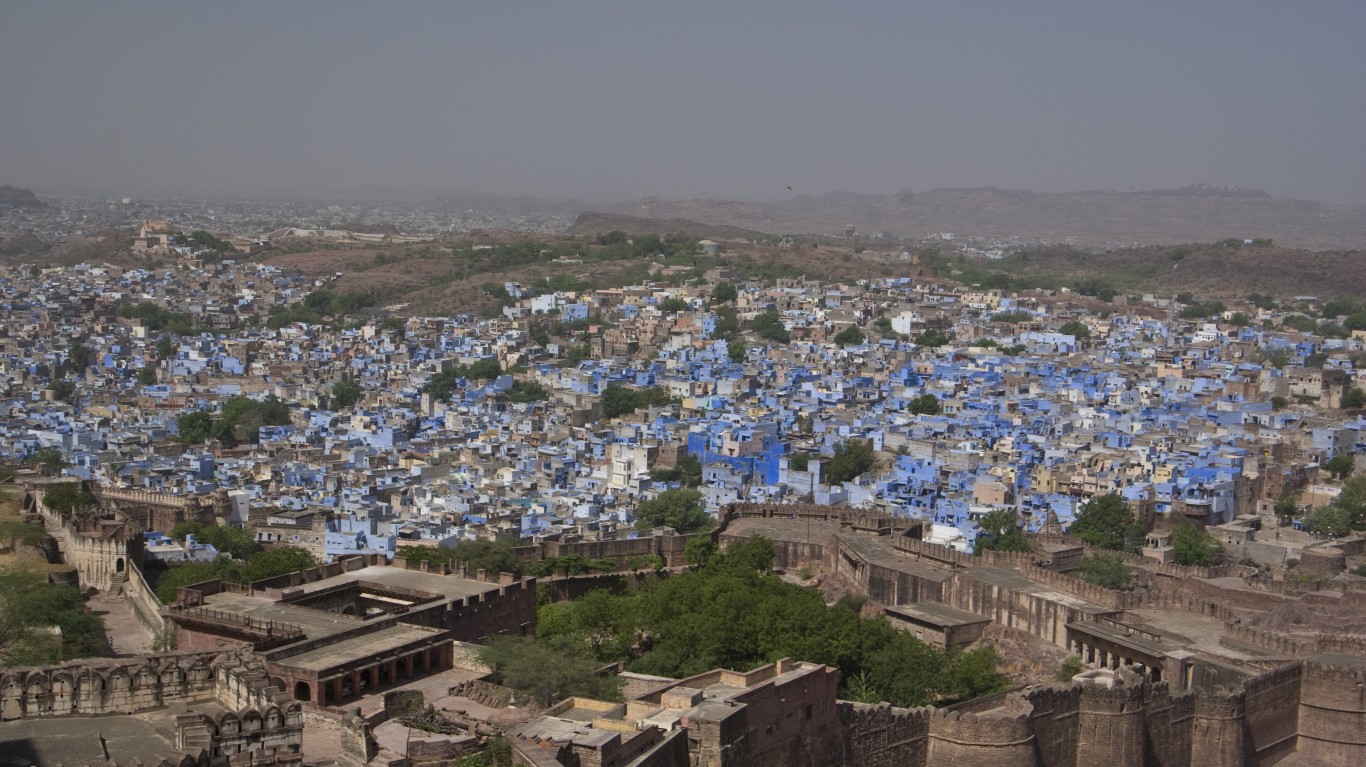
16. Jodhpur, West India
> Population: 1.3 million
> Average annual PM2.5 pollution per cubic meter: 97.8 micrograms
> Average annual PM10 pollution per cubic meter: 180.2 micrograms
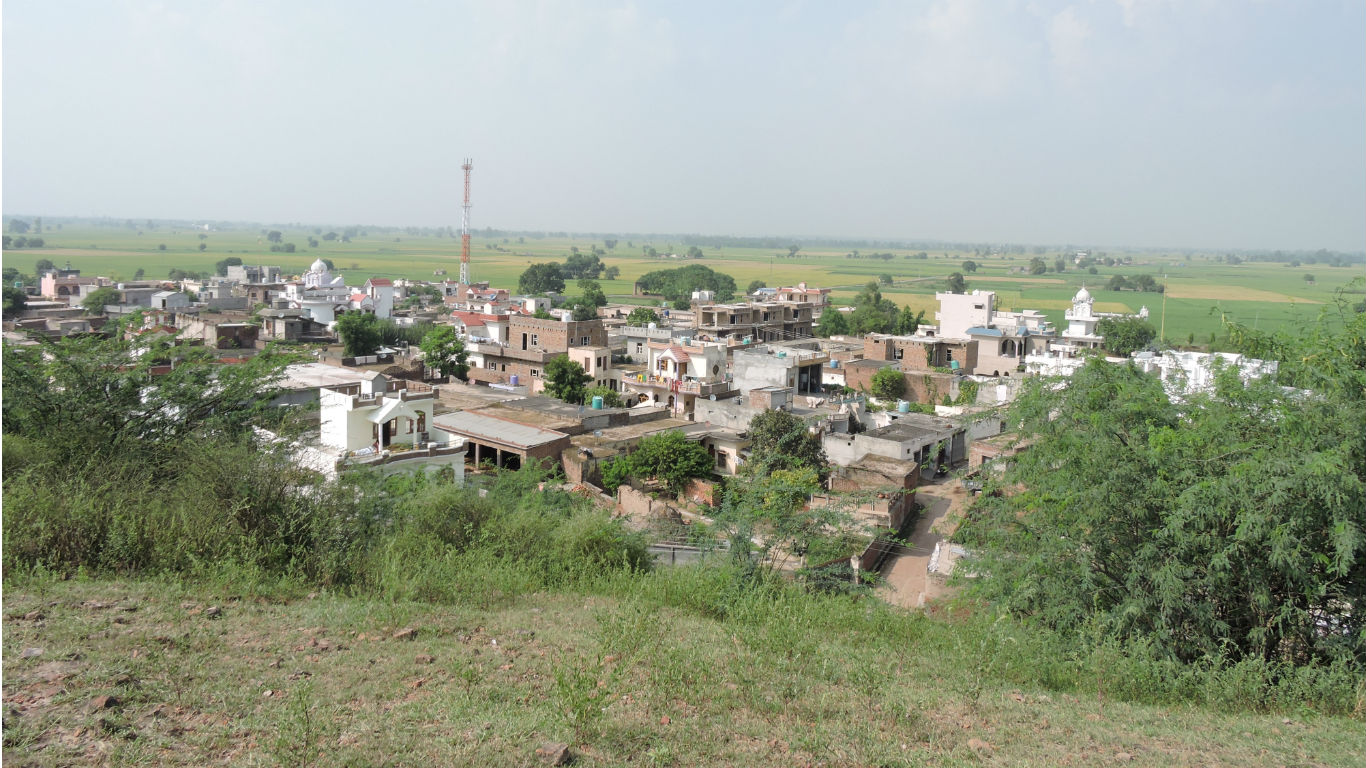
15. Patiala, North India
> Population: 510,000
> Average annual PM2.5 pollution per cubic meter: 101.2 micrograms
> Average annual PM10 pollution per cubic meter: 183.7 micrograms
[in-text-ad-2]
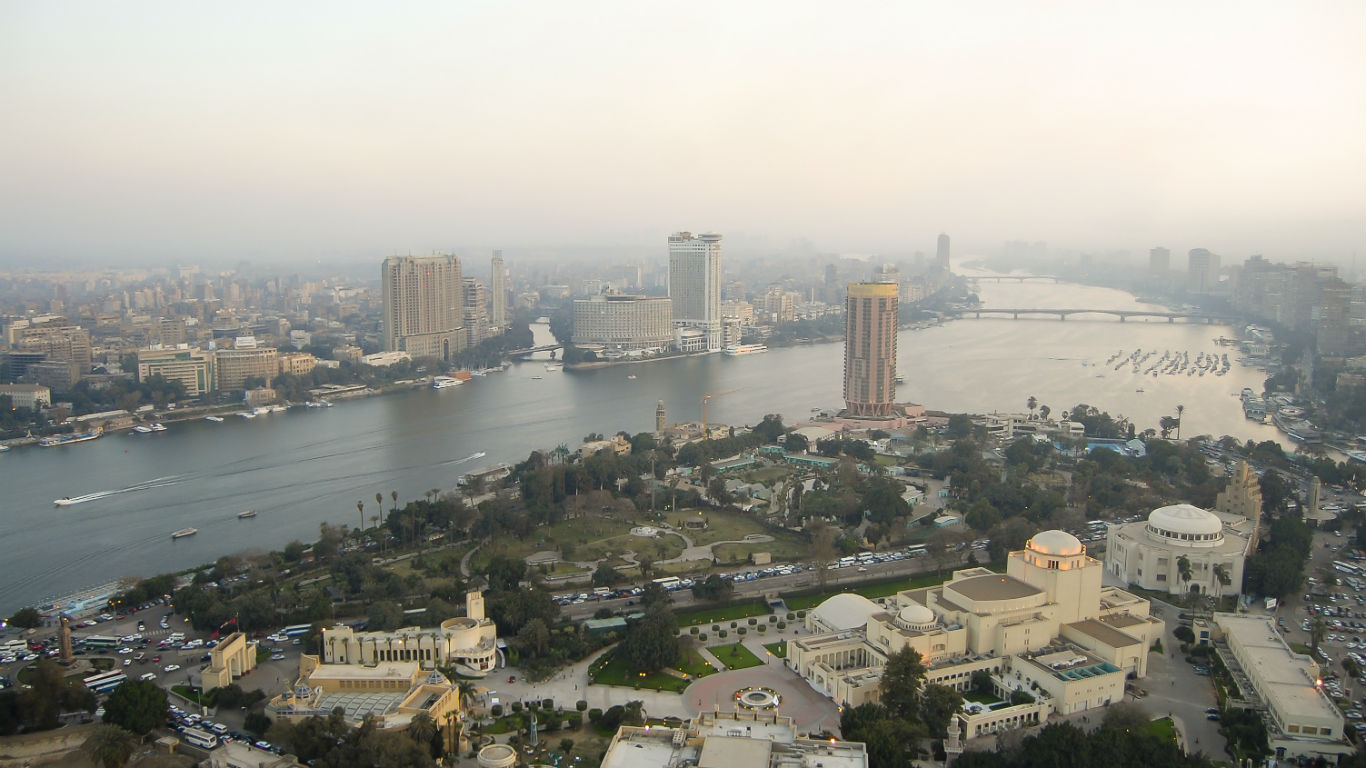
14. Delta Region, Egypt
> Population: 7.9 million
> Average annual PM2.5 pollution per cubic meter: 102.2 micrograms
> Average annual PM10 pollution per cubic meter: 249.0 micrograms
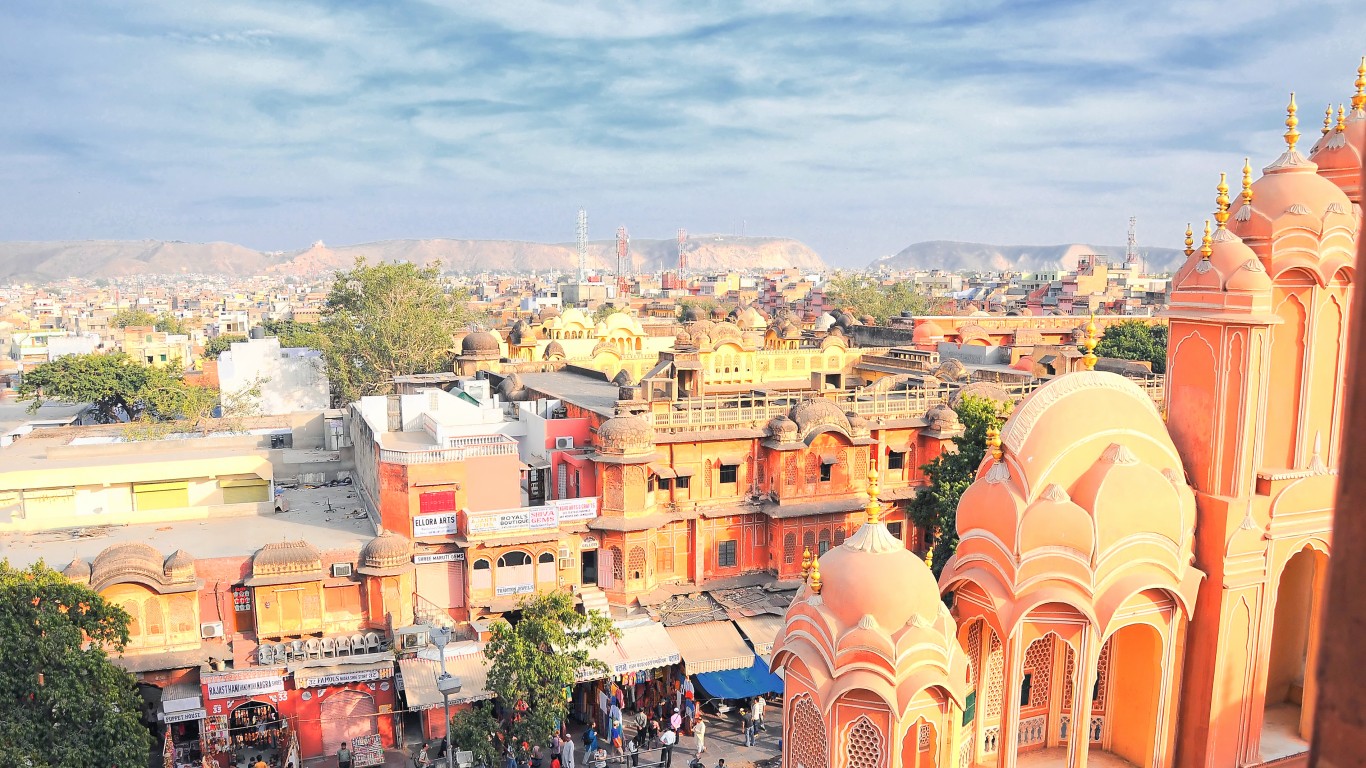
13. Jaipur, West India
> Population: 3.5 million
> Average annual PM2.5 pollution per cubic meter: 104.6 micrograms
> Average annual PM10 pollution per cubic meter: 192.6 micrograms
[in-text-ad]
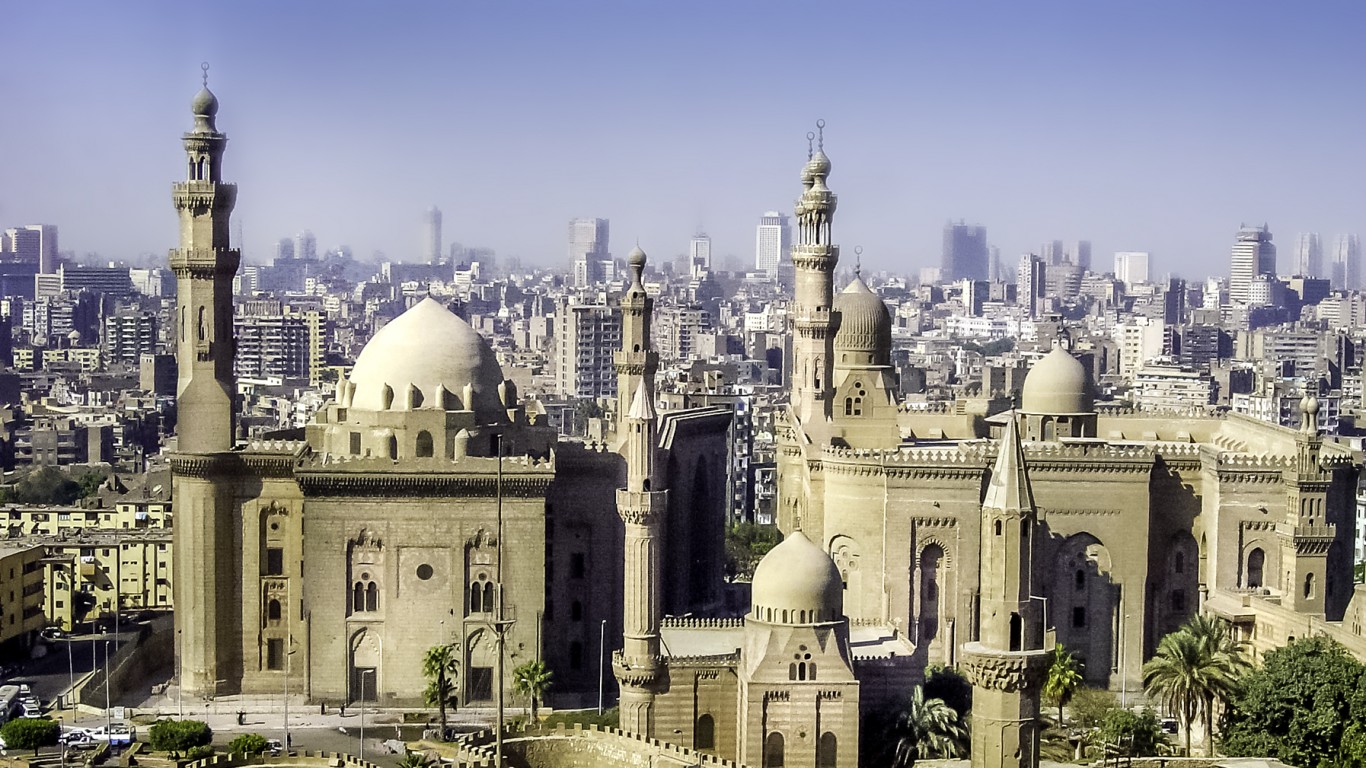
12. Greater Cairo, Egypt
> Population: 18.8 million
> Average annual PM2.5 pollution per cubic meter: 116.6 micrograms
> Average annual PM10 pollution per cubic meter: 284.0 micrograms
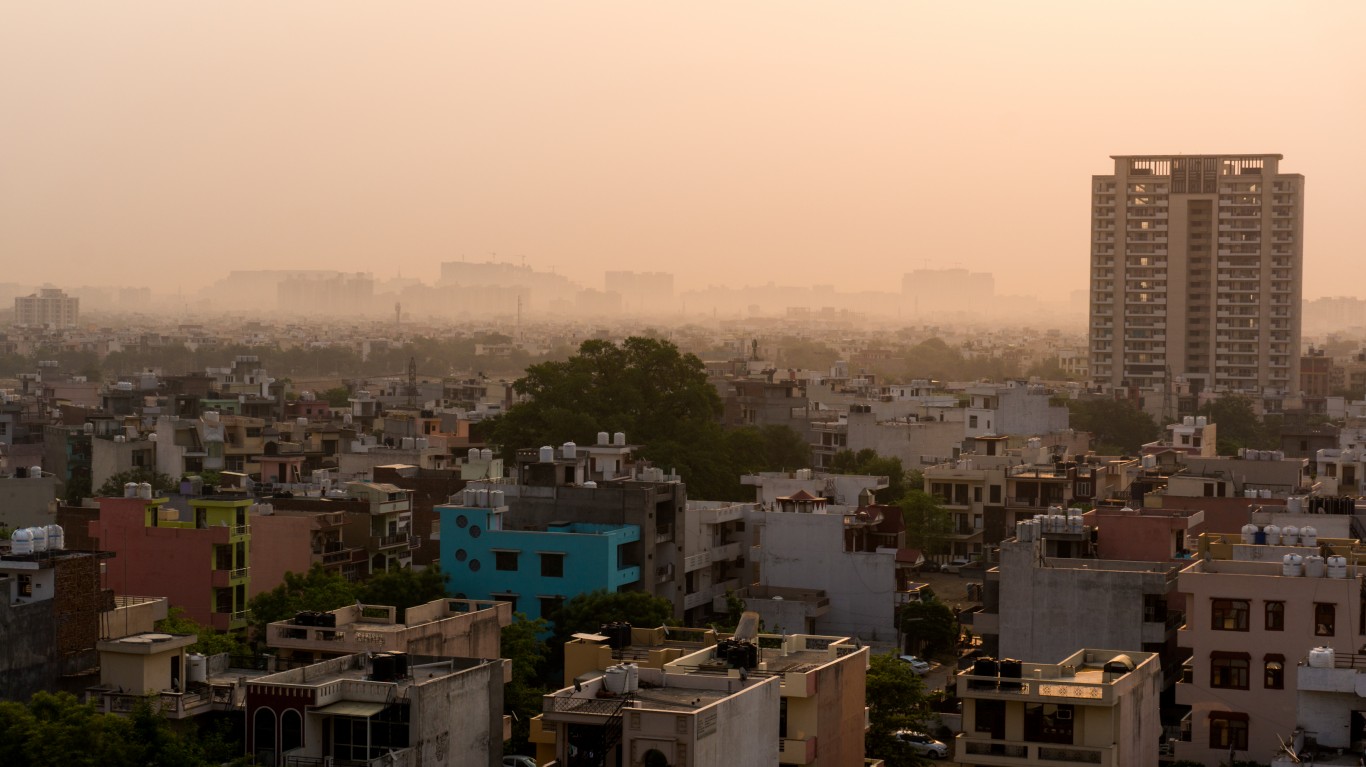
11. Gurgaon, North India
> Population: 902,000
> Average annual PM2.5 pollution per cubic meter: 119.6 micrograms
> Average annual PM10 pollution per cubic meter: 124.3 micrograms

10. Muzaffarpur, East India
> Population: 439,000
> Average annual PM2.5 pollution per cubic meter: 120.0 micrograms
> Average annual PM10 pollution per cubic meter: 220.9 micrograms
[in-text-ad-2]

9. Agra, North India
> Population: 2.0 million
> Average annual PM2.5 pollution per cubic meter: 131.4 micrograms
> Average annual PM10 pollution per cubic meter: 194.5 micrograms

8. Lucknow, North India
> Population: 3.2 million
> Average annual PM2.5 pollution per cubic meter: 138.4 micrograms
> Average annual PM10 pollution per cubic meter: 254.9 micrograms
[in-text-ad]
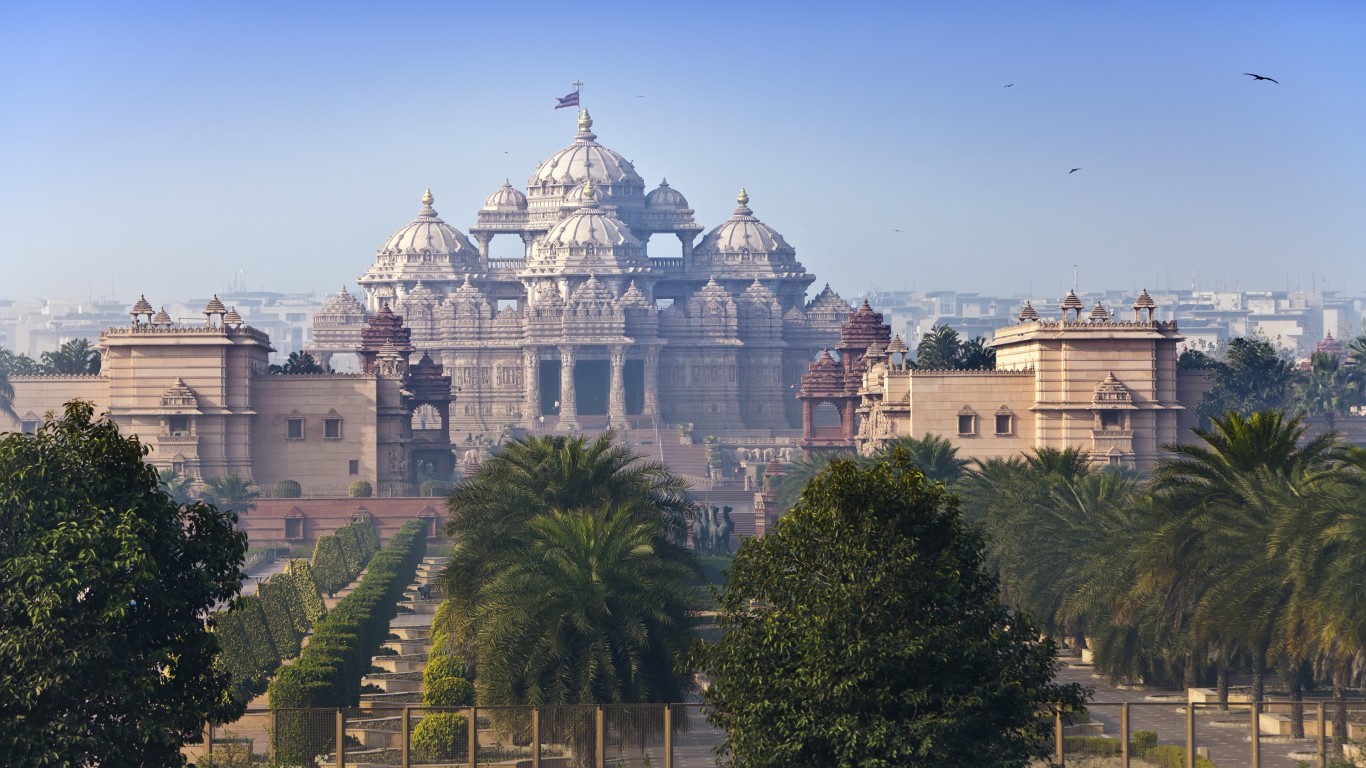
7. Delhi, North India
> Population: 25.7 million
> Average annual PM2.5 pollution per cubic meter: 143.1 micrograms
> Average annual PM10 pollution per cubic meter: 292.3 micrograms

6. Patna, East India
> Population: 2.2 million
> Average annual PM2.5 pollution per cubic meter: 144.3 micrograms
> Average annual PM10 pollution per cubic meter: 265.7 micrograms

5. Varanasi, North India
> Population: 1.5 million
> Average annual PM2.5 pollution per cubic meter: 146.3 micrograms
> Average annual PM10 pollution per cubic meter: 260.1 micrograms
[in-text-ad-2]
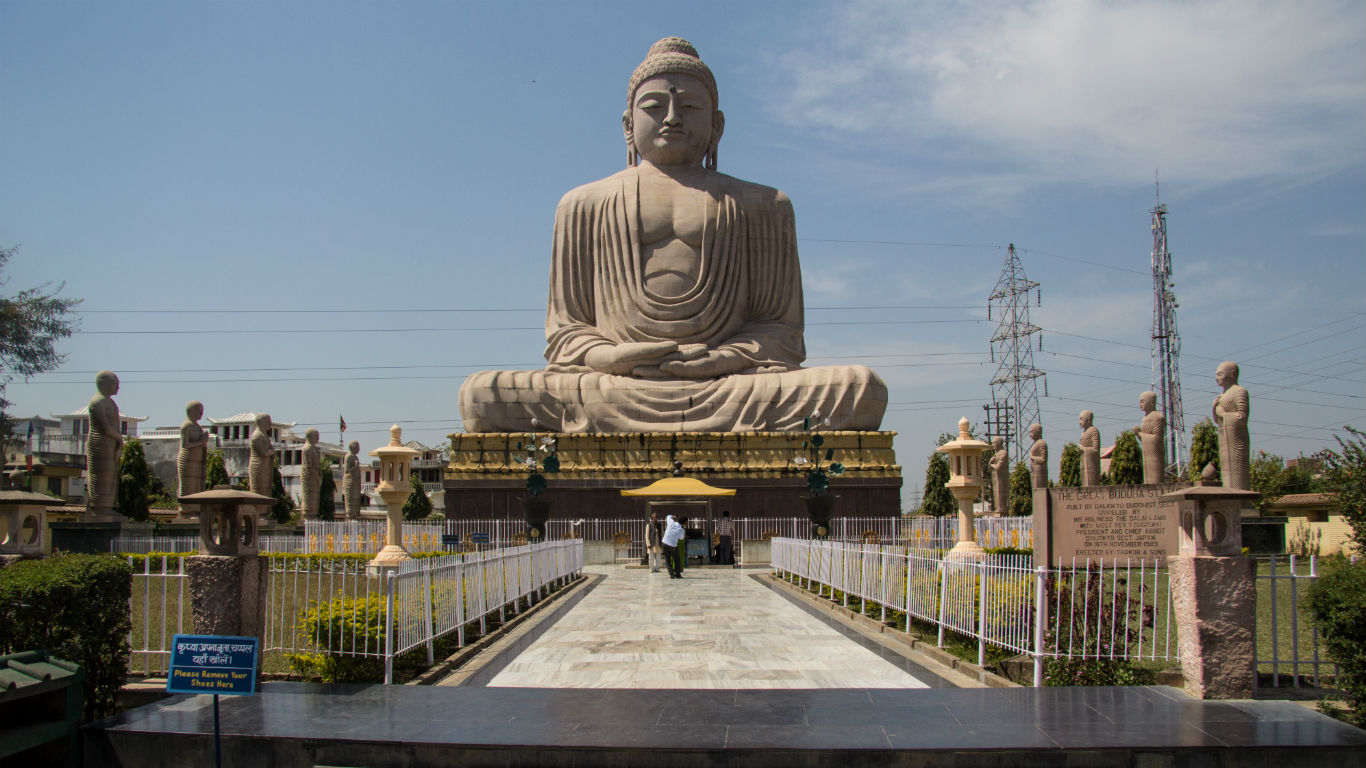
4. Gaya, East India
> Population: 508,000
> Average annual PM2.5 pollution per cubic meter: 149.1 micrograms
> Average annual PM10 pollution per cubic meter: 274.6 micrograms
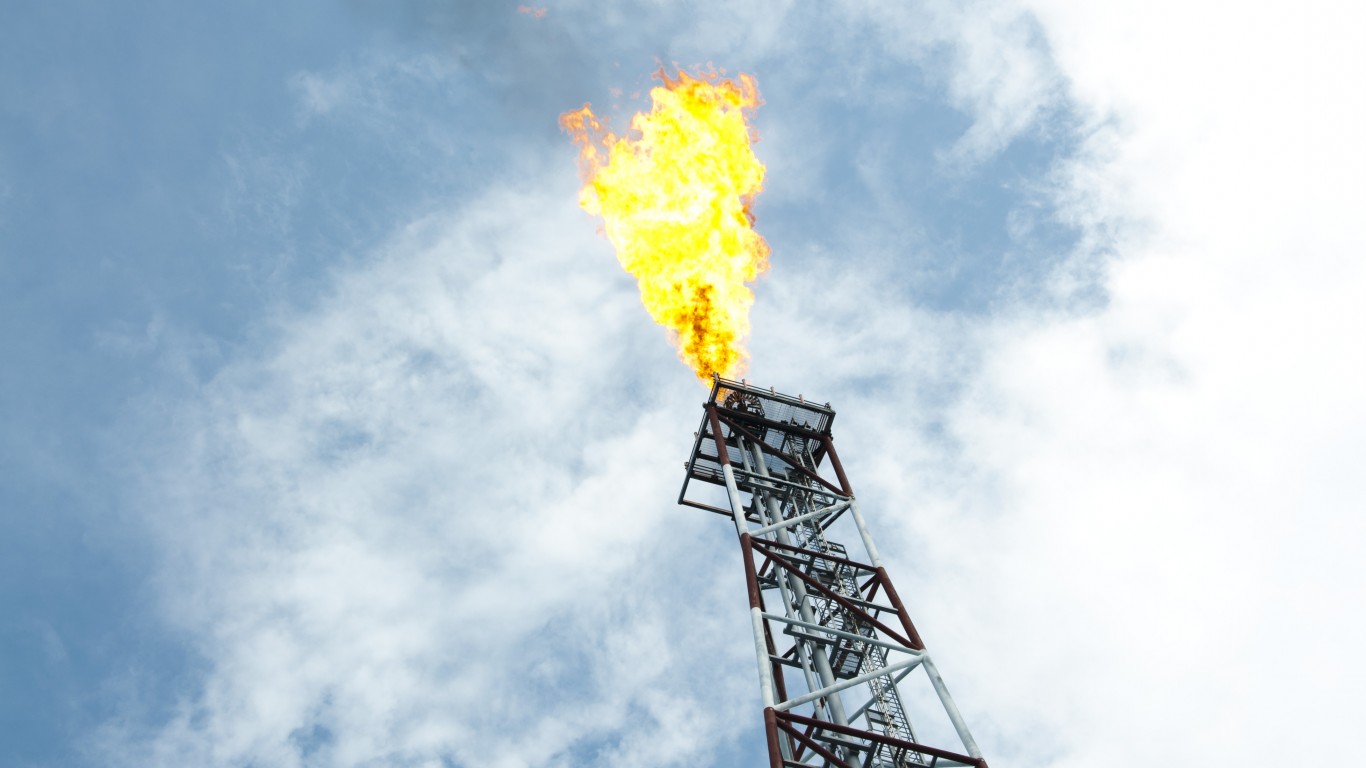
3. Pasakha, Bhutan
> Population: 20,000
> Average annual PM2.5 pollution per cubic meter: 149.9 micrograms
> Average annual PM10 pollution per cubic meter: 275.0 micrograms
[in-text-ad]
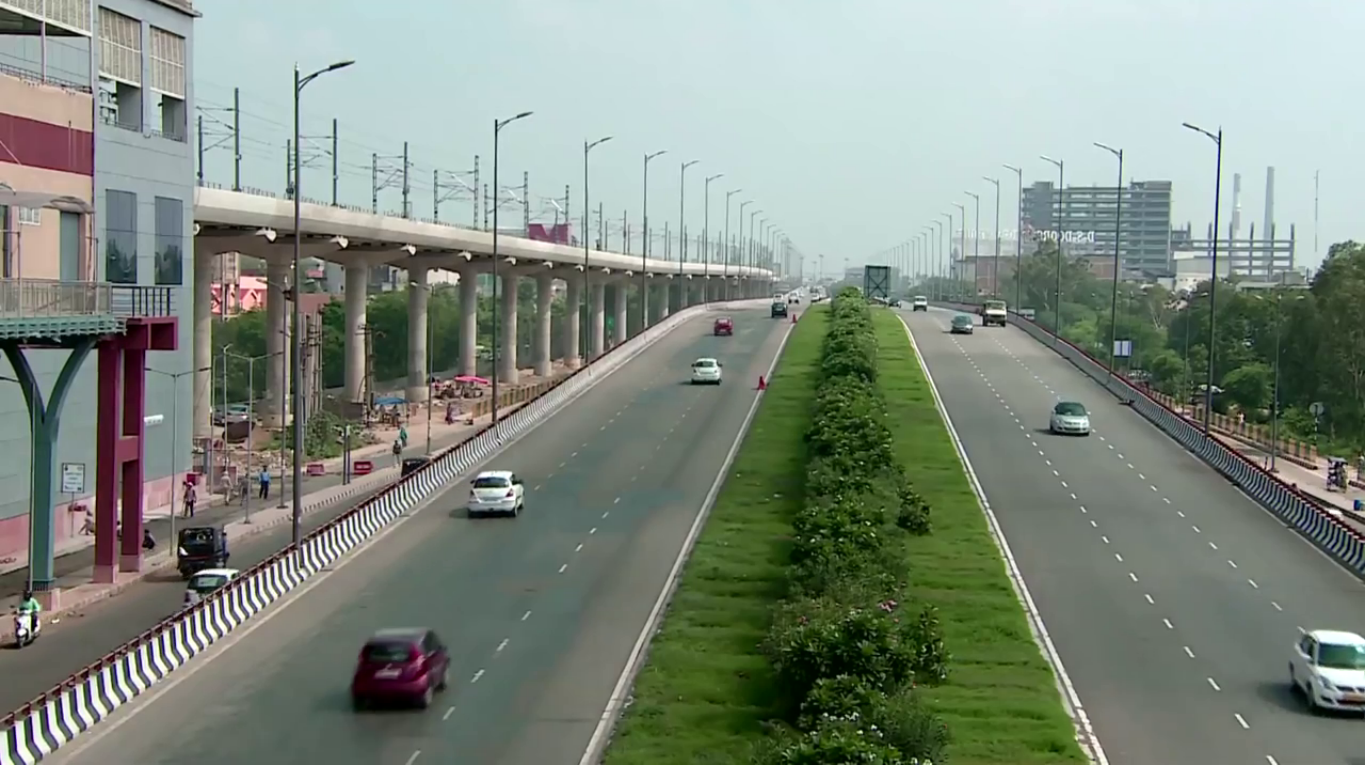
2. Faridabad, North India
> Population: 1.8 million
> Average annual PM2.5 pollution per cubic meter: 171.5 micrograms
> Average annual PM10 pollution per cubic meter: 315.9 micrograms

1. Kanpur, North India
> Population: 3.0 million
> Average annual PM2.5 pollution per cubic meter: 173.0 micrograms
> Average annual PM10 pollution per cubic meter: 318.5 micrograms
Methodology:
To identify the most polluted cities in the world, 24/7 Wall St. ranked nearly 3,000 cities worldwide based on the annual average concentration of PM2.5 per square meter of air. We only considered the most recent air quality data from the WHO Global Ambient Air Quality Database (update 2018). Only cities for which PM2.5 concentration was directly measured and not imputed from other measures of air pollution were considered. Though it was not factored into the ranking, we also included PM10 concentration. Pollution data came from the World Health Organization. Population figures also came from the WHO Global Ambient Air Quality Database (update 2018). For cities not included in the U.N. report, population estimates came from a range of sources.
Want to Retire Early? Start Here (Sponsor)
Want retirement to come a few years earlier than you’d planned? Or are you ready to retire now, but want an extra set of eyes on your finances?
Now you can speak with up to 3 financial experts in your area for FREE. By simply clicking here you can begin to match with financial professionals who can help you build your plan to retire early. And the best part? The first conversation with them is free.
Click here to match with up to 3 financial pros who would be excited to help you make financial decisions.
Have questions about retirement or personal finance? Email us at [email protected]!
By emailing your questions to 24/7 Wall St., you agree to have them published anonymously on a673b.bigscoots-temp.com.
By submitting your story, you understand and agree that we may use your story, or versions of it, in all media and platforms, including via third parties.
Thank you for reading! Have some feedback for us?
Contact the 24/7 Wall St. editorial team.
 24/7 Wall St.
24/7 Wall St. 24/7 Wall St.
24/7 Wall St. 24/7 Wall St.
24/7 Wall St.

